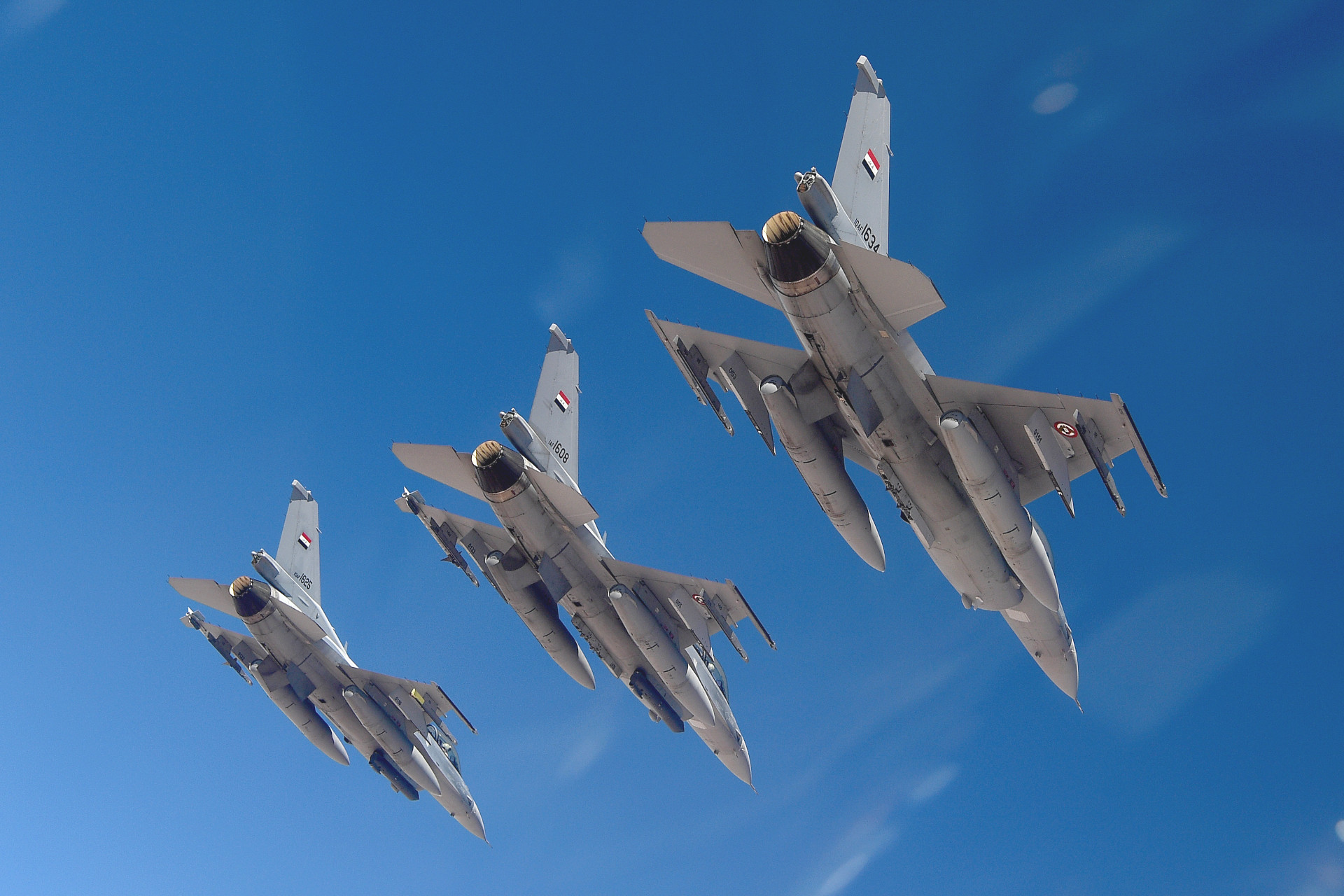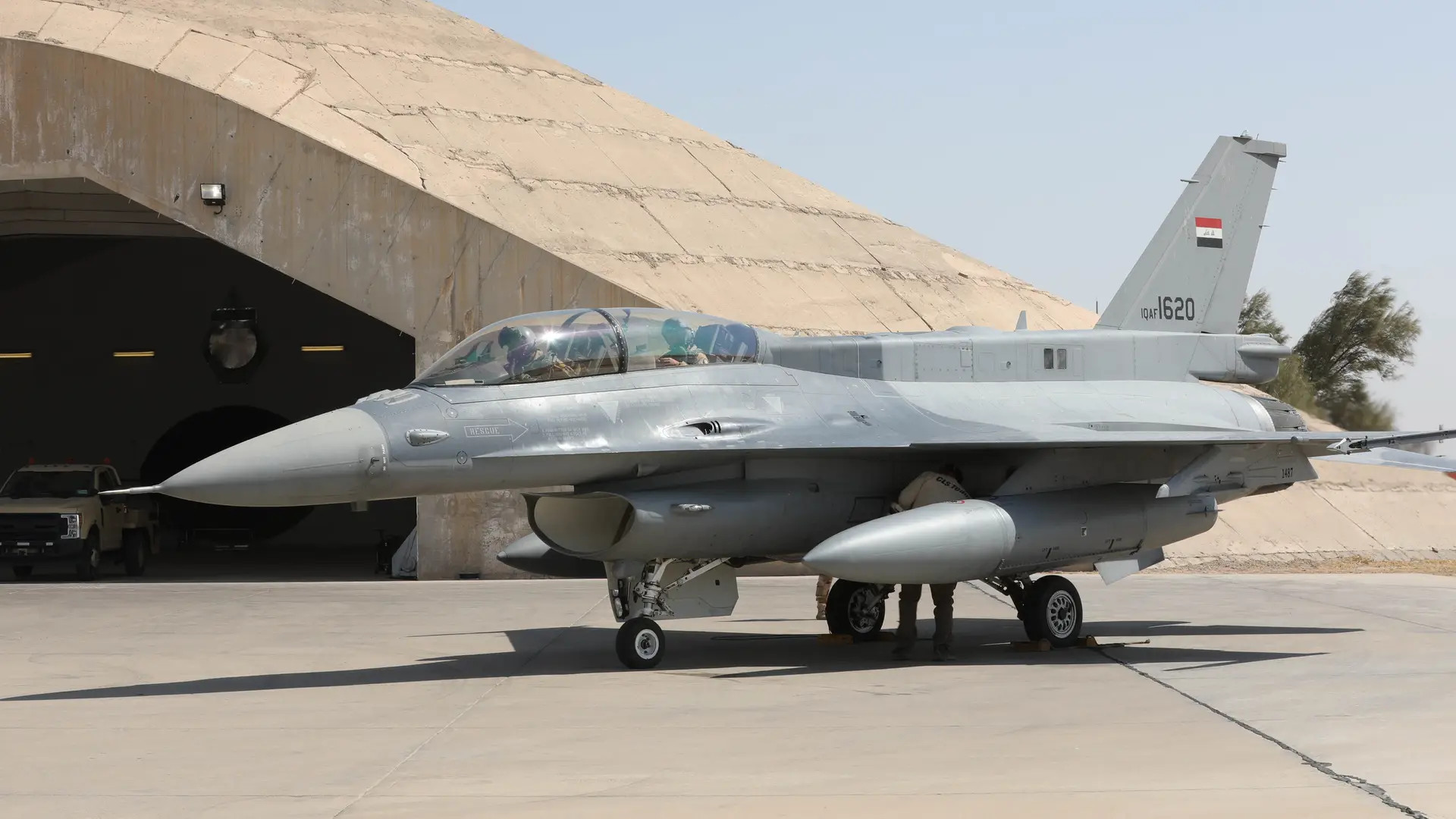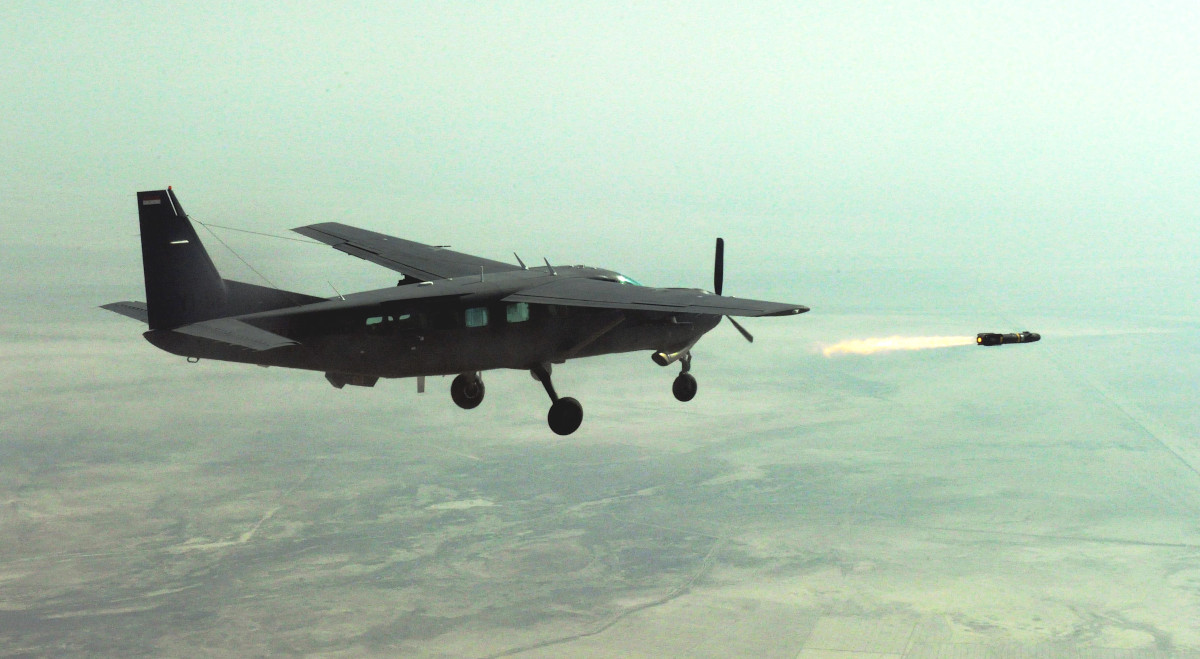Iraq’s F-16IQ Viper fighter jets armed with laser-guided bombs have become the country’s most reliable platforms for carrying out airstrikes against ISIS terrorists, according to the Pentagon. This is at least in part due to a shortage of spare parts for Iraq’s Russian-made Mi-28 Havoc and Mi-35 Hind attack helicopters as a result of the war in Ukraine. U.S. and Iraqi authorities are now also looking into the possibility of modernizing the F-16IQ’s notoriously limited air-to-air capabilities.
The new details about the Iraqi F-16IQ fleet, as well as its other fixed-wing aircraft and helicopters, are contained in a routine report published yesterday jointly by the Inspectors General of the Department of Defense, the Department of State, and the U.S. Agency for International Development (USAID). The information about the Vipers is particularly significant given that there were real questions about whether this fleet was at risk of effectively ceasing to exist two years ago.

“Iraq’s F-16s continue to be the most reliable shooting platform,” according to the report. Iraq “did not use Russian produced Mi-28 or Mi-35 attack helicopters, its Chinese-produced CH-4 armed UAS, or its Czech-produced L-159 light fighters” for strikes, at least against ISIS, between January 1 and March 31, 2023, it adds.
The video below shows Mi-28s and Mi-35s in use circa 2017 during the Battle of Mosul.

Iraq’s fleet of 34 F-16IQs – a mix of single and two-seat versions – are “66 percent mission capable” and “the Iraqi Air Force (IqAF) [can] adequately perform air-to-ground missions with current parts and personnel on hand,” the report continues. “Russian-made aircraft in the ISF fleet remain in disrepair due to the inability to acquire parts because of the sanctions related to the war in Ukraine.”

Another joint Inspectors General report released earlier this year revealed that Iraq was contending with a shortage of parts for its Mi-17 armed transport helicopters that were also linked to Russia’s war in Ukraine. At that time, U.S. officials also disclosed that there were plans in the works to replace those and other helicopters in Iraqi service with new American-made types, as you can read more about here.
The report released yesterday does not elaborate on what issues might be impacting the use of the Chinese CH-4 drones or Czech L-159 light jets. There is no discussion at all about the status of Iraq’s Soviet-era Su-25 Frogfoot ground attack jets. There have been reports since 2019 that Iraqi personnel have had trouble operating and maintaining the CH-4s, and that various customers around the world have been less than pleased with the performance of these uncrewed aircraft.

When it comes to the F-16IQs, a 66-percent mission-capable rate is impressive. The U.S. Air Force’s publicly disclosed mission capable rate percentages for its F-16C/D Vipers typically hover between the high 60s and the low 70s. However, it is important to note that private contractors continue to be essential for maintaining Iraq’s Vipers. Disruption in that support in 2021, when Lockheed Martin withdrew maintenance contractors due to a spike in violence, was a key contributor to fears that the jets would quickly become completely unflyable.
The Inspectors General report also makes clear that Iraqi F-16IQ pilots remain heavily dependent on help from the U.S.-led coalition, officially known as Combined Joint Task Force-Operation Inherent Resolve (CJTF-OIR), to actually execute strikes on ISIS targets.
“CJTF-OIR reported that the JOC-I [Joint Operations Command-Iraq in Baghdad] conducted an independent strike on February 12 with no support from Coalition resources, using an F-16 to target a suspected ISIS fighter in Salah ad Din province with six precision guided bombs,” the report says. “This was the fourth airstrike that the ISF [Iraqi Security Forces] conducted entirely without Coalition support; the first occurred in September 2022. CJTF-OIR said that Coalition advisors enabled all other Iraqi strikes through ISR observation, verbal direction to targets, and terminal guidance of guided munitions.”

The report adds that all of the Iraqi F-16IQ strikes were carried out using either 2,000-pound GBU-10/B or 500-pound GBU-12/B Paveway II series laser-guided bombs. Iraq’s Cessna AC-208 aircraft and Eurocopter EC635 helicopters also conducted a number of strikes during the reporting period using AGM-114 Hellfire laser-guided missiles and 7.62x51mm machine gun pods, respectively.

The current significance of Iraq’s F-16IQs, at least according to the U.S. government, is notable for a number of reasons. The most immediate of course is the dramatic turnaround for the Iraqi Vipers, the fate of which seemed somewhat uncertain in recent years.
It is also the latest evidence of the knock-on effects of the war in Ukraine on Russia’s arms industry, including exports abroad, and the Kremlin’s general foreign influence. This includes crippling Western sanctions, a surge in domestic demands on the country’s defense industrial base to make up for major materiel losses in the fighting, and strains on various workforces.
For many years, there had been some signs that Iraqi authorities were looking toward Moscow as one alternative to Washington.
“On February 5, Russian Foreign Minister Sergei Lavrov arrived in Baghdad for a series of talks with Iraqi officials on energy, stability, and food security in view of the Ukraine conflict,” the newly released joint Inspectors General report notes. “Lavrov discussed Iraqi debts owed to Russian oil companies, which Iraq is withholding due to U.S. sanctions placed on Russia following its invasion of Ukraine. … On February 23, Iraq voted in favor of a UN resolution calling for a comprehensive, just, and lasting peace in Ukraine.”

Other foreign operators of Russian fixed-wing aircraft and helicopters now look to be moving toward acquiring Western types in light of the state of Russia’s defense industry as a result of the conflict in Ukraine. In response, Western companies, such as Bell in the United States, have been reorienting their product lines to be better positioned to meet this new market demand.
The new Inspectors General report also, if indirectly, highlights how Iraq’s F-16IQs are the country’s main tool for policing its own airspace at present. This reality is perhaps newly relevant given a series of Turkish airstrikes targeting Kurdish groups in Iraq last year, including one that killed eight civilians in July 2022, according to local officials.
The U.S. government’s decision to supply F-16s of any kind to Iraq was controversial from the beginning and ultimately went ahead in the early 2010s with the understanding that the capabilities of those aircraft would be significantly limited. This was particularly pronounced when it came to the jets’ air-to-air capabilities, with only older AIM-9L/M Sidewinder and AIM-7M Sparrow missiles being provided along with them.

“The AIM-7 air-to-air missiles for use on Iraq’s F-16s are at a point of concern because of the lack of replacements or repair vendors for their Continuous Wave Illuminators, which guide the munition to its target,” according to the Inspectors General report published yesterday. Now, the U.S. Office of Security Coooperation-Iraq (OSC-I) “is exploring a way to fill this potential capability gap.”
While the newer AIM-9X variant of the Sidewinder is still in production, there do not appear to be any producers left of new AIM-7s. The RIM-7 Sea Sparrow surface-to-air version is still in production, but there may be different pressures on that particular supply chain due to plans to send those missiles to Ukraine. European missile conglomerate MBDA also still produces versions of Aspide, a Sparrow derivative, but again primarily for ground-launched and sea-based use.
Altogether, the most readily available replacement for the AIM-7 on the F-16 could be a variant of the AIM-120 Advanced Medium-Range Air-to-Air Missile (AMRAAM). This was, of course, one of the newer missiles the U.S. government explicitly decided against supplying to the Iraqis with the F-16IQs more than a decade ago. There were concerns at the time that arming Iraq’s Vipers with AIM-120s, as well as AIM-9Xs, could upset regional power balances and might present technical security risks, especially because of the country’s close ties to Iran.
Whether the current global geopolitical climate leads U.S. officials to change their views on all of this regard remains to be seen, as well as what other alternatives to the AIM-7 for the F-16IQs they might explore.
Whatever might be in store for Iraq’s F-16IQs in the coming years, the aircraft seem to have found new significance thanks in part to the fallout from Russia’s war on Ukraine. On top of that, there are signs that the jets’ newfound importance to Iraq’s overall national security posture may now grow further still in the future.
Contact the author: joe@thedrive.com
